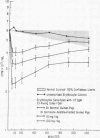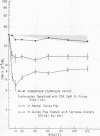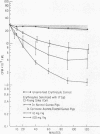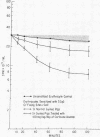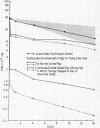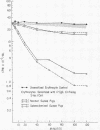Abstract
Corticosteroids and splenectomy constitute two important therapeutic modalities in the treatment of autoimmune hemolytic anemia. Each of these may affect both the rate of synthesis of autoantibody and the clearance of antibody sensitized cells. The latter possibility has been examined in an experimental model which allows evaluation of the role of antibody and complement in the immune clearance of erythrocytes in molecular terms. The in vivo clearance of 51Cr-labeled guinea pig erythrocytes sensitized with purified rabbit IgG or IgM antibody to produce a known number of complement-fixing sites per cell was studied.
Corticosteroid therapy increased the survival of both IgG and IgM sensitized erythrocytes by decreasing sequestration in the reticuloendothelial system (RES). 5 days of therapy prior to injection of antibody coated cells were required for a maximal effect. It appeared that the RES of cortisone-treated animals had a lowered sensitivity to erythrocytes coated with antibody and complement and the cells were removed as though they were coated with fewer complement sites/cell. The general pattern and kinetics of clearance and the localization of sequestered cells were not modified by corticosteroids. As the number of IgG C1-fixing sites was increased, the difference betwen cortisone treated and control animals was less marked.
Splenectomy led to an increased survival of IgG-coated cells and a sixfold increase in IgG C1-fixing sites was necessary in order to obtain similar rates of clearance in splenectomized and control animals. The liver was responsible for this much less efficient clearance of cells in splenectomized animals: the clearance pattern was typical of that noted for IgG. No effect at all was noted on the clearance of IgM sensitized cells in splenectomized animals.
These experiments clearly demonstrate that both corticosteroid therapy and splenectomy act to decrease the in vivo clearance of IgG-sensitized cells: only corticosteroids alter the clearance of IgM-sensitized erythrocytes. This effect may be of major importance in explaining the efficacy of these therapeutic modalities in autoimune hemolytic anemia.
Full text
PDF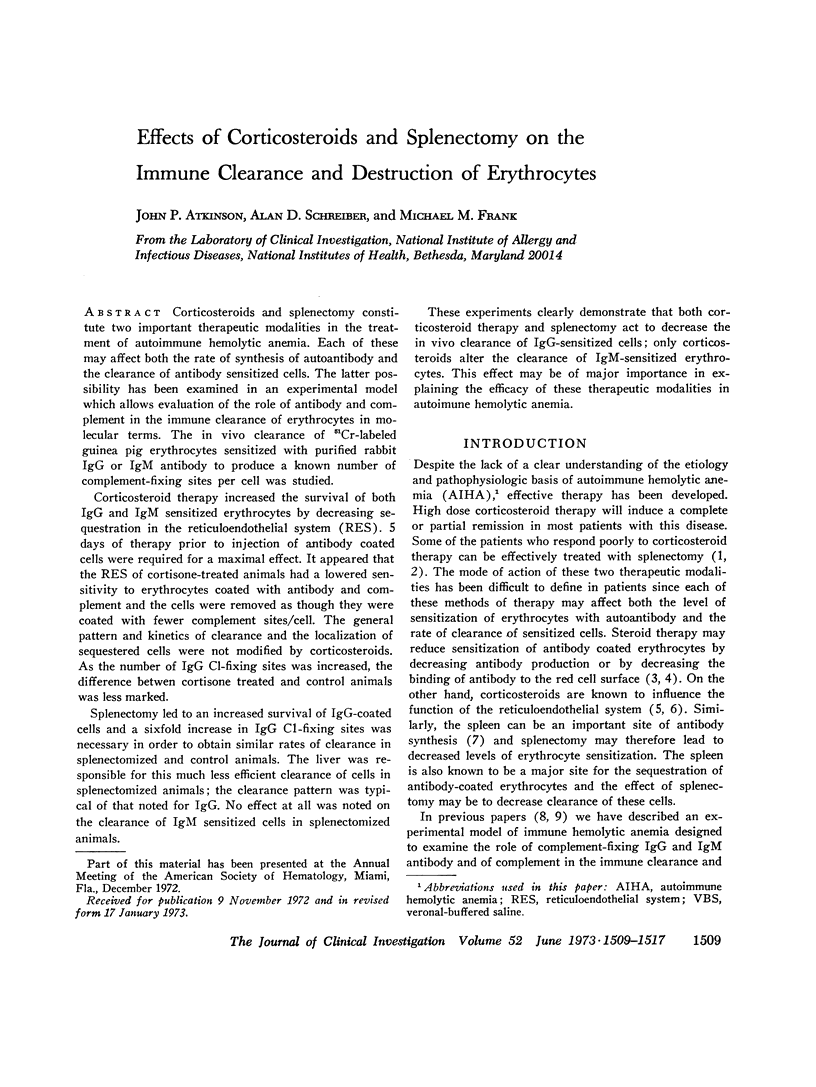
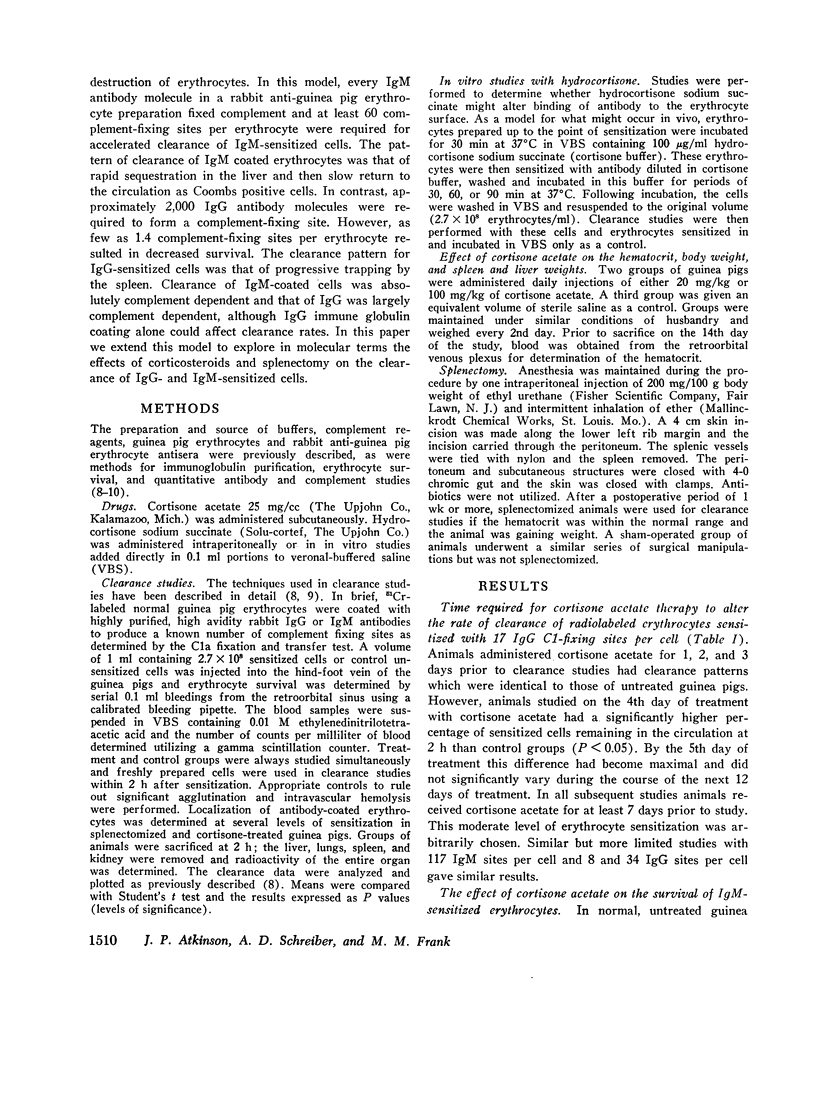
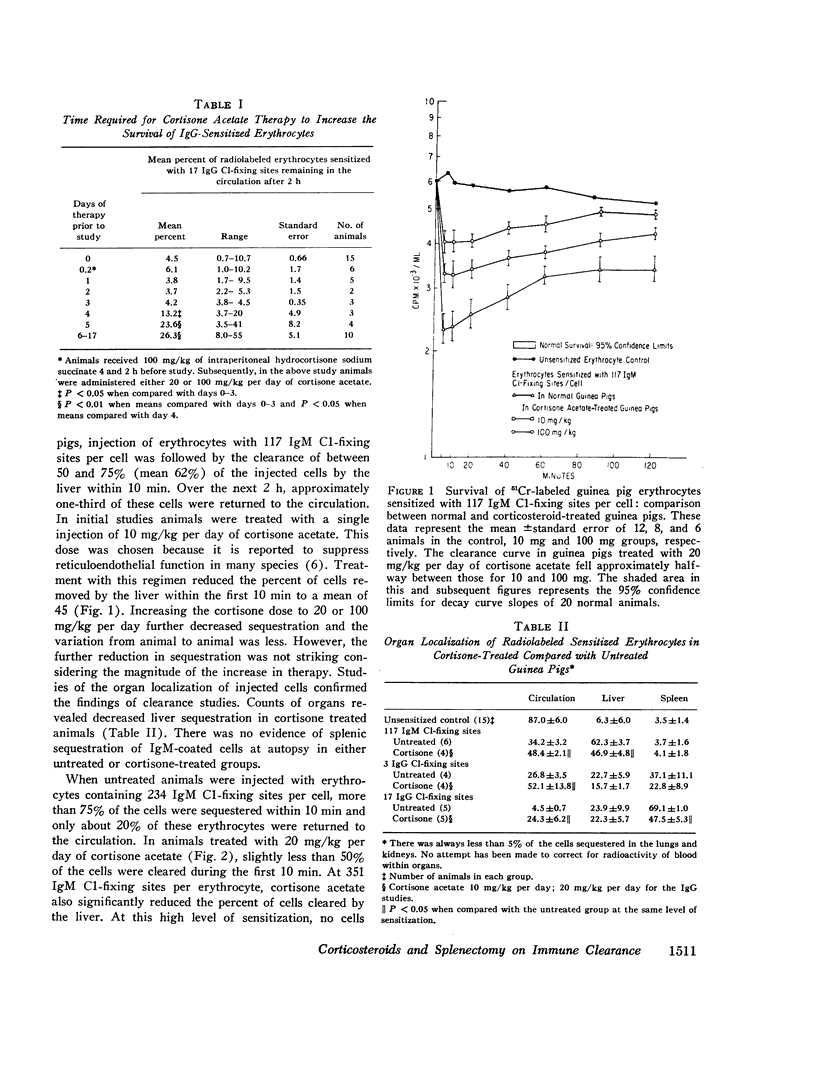
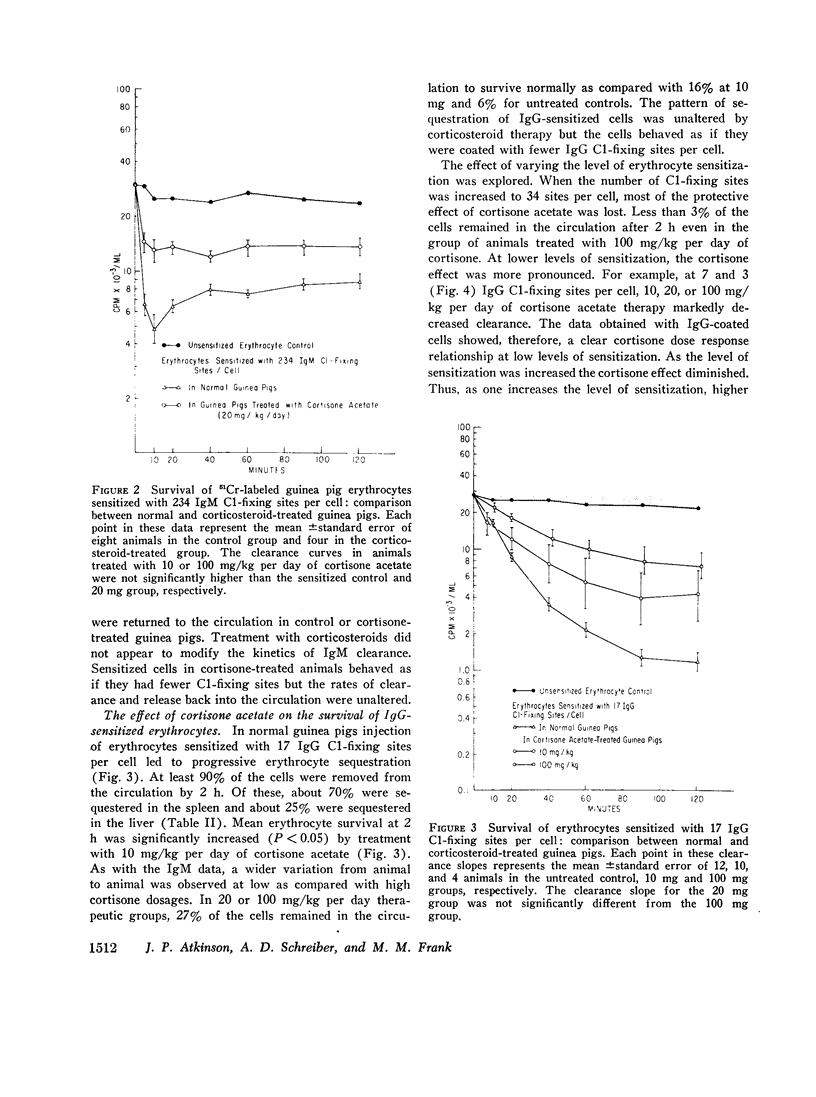

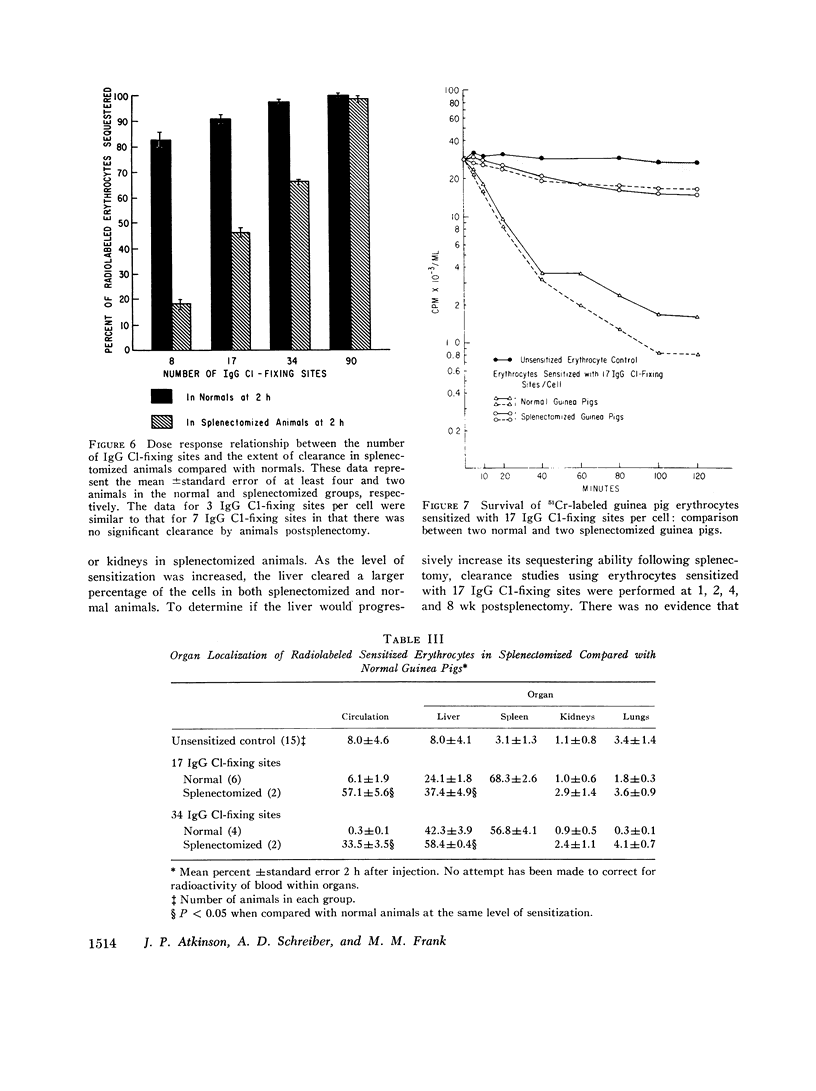
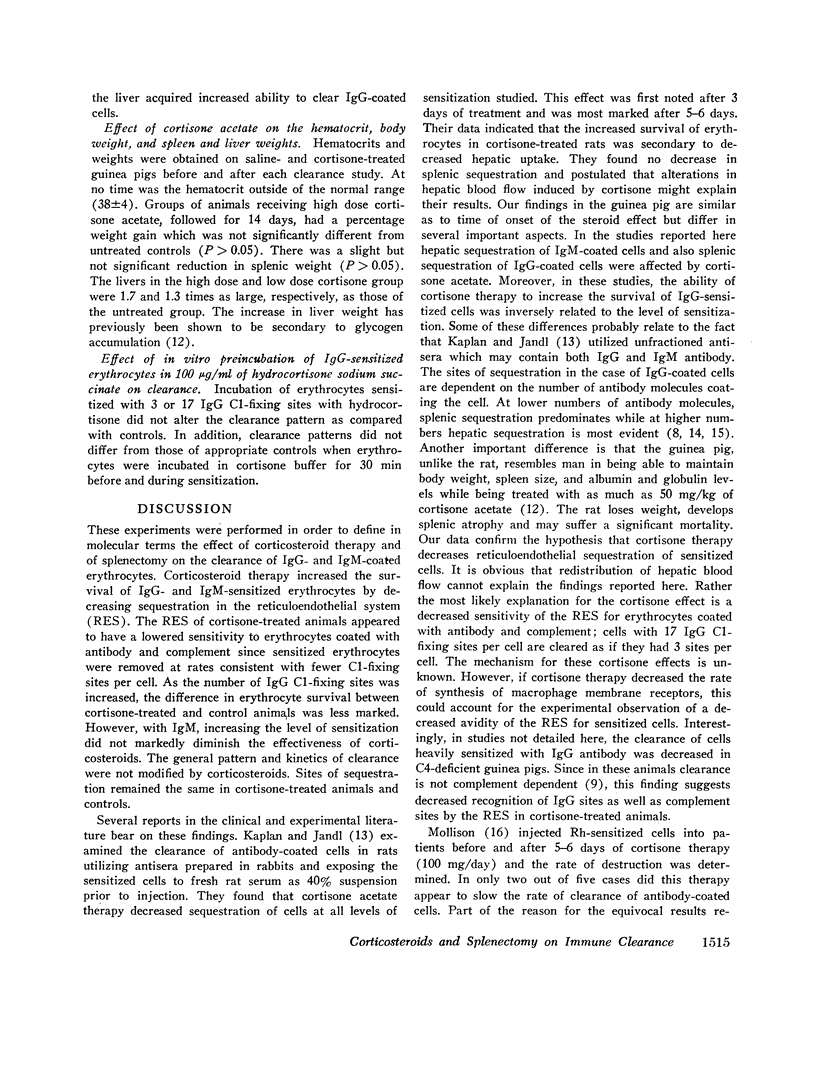
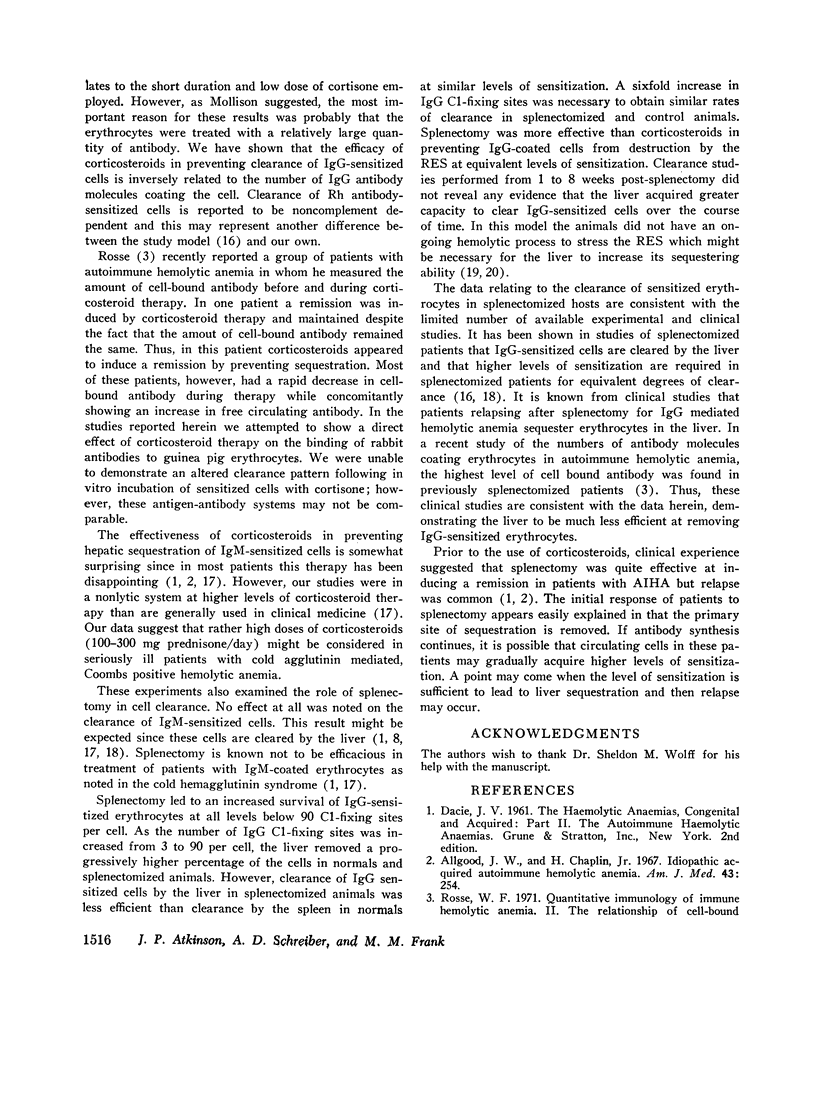
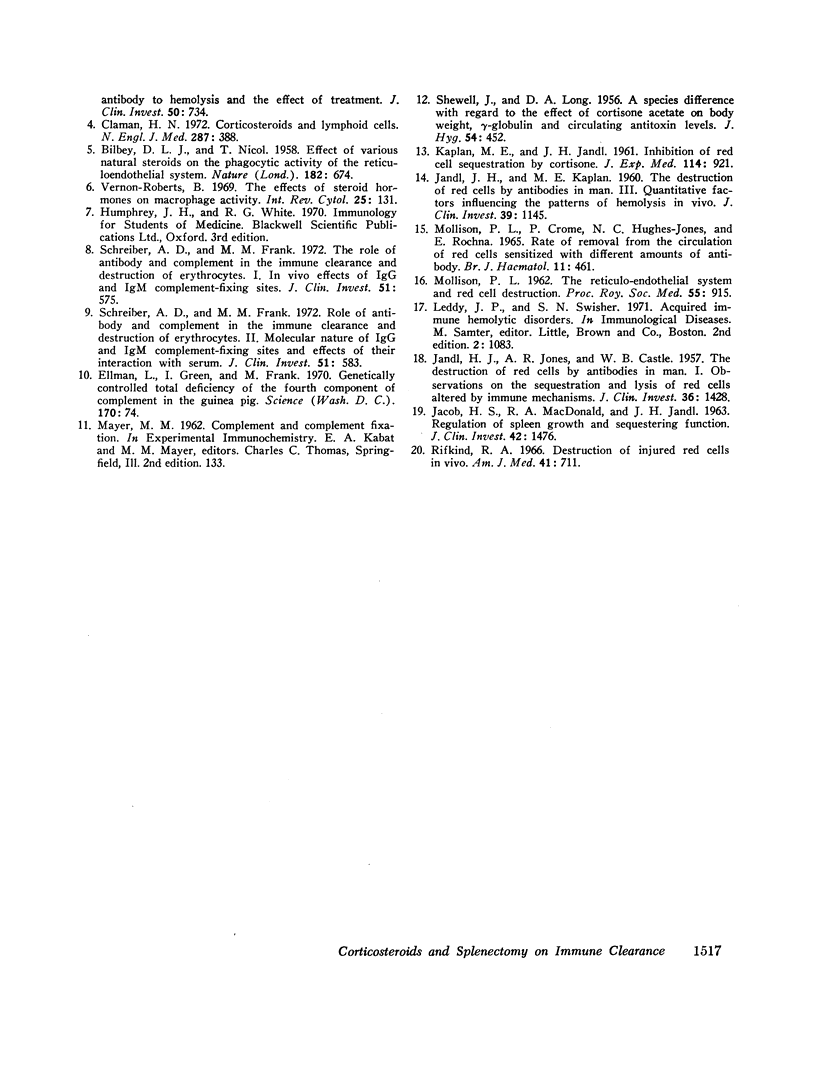
Images in this article
Selected References
These references are in PubMed. This may not be the complete list of references from this article.
- Allgood J. W., Chaplin H., Jr Idiopathic acquired autoimmune hemolytic anemia. A review of forty-seven cases treated from 1955 through 1965. Am J Med. 1967 Aug;43(2):254–273. doi: 10.1016/0002-9343(67)90168-4. [DOI] [PubMed] [Google Scholar]
- BILBEY D. L., NICOL T. Effect of various natural steroids on the phagocytic activity of the reticuloendothelial system. Nature. 1958 Sep 6;182(4636):674–674. doi: 10.1038/182674a0. [DOI] [PubMed] [Google Scholar]
- Claman H. N. Corticosteroids and lymphoid cells. N Engl J Med. 1972 Aug 24;287(8):388–397. doi: 10.1056/NEJM197208242870806. [DOI] [PubMed] [Google Scholar]
- JACOB H. S., MACDONALD R. A., JANDL J. H. REGULATION OF SPLEEN GROWTH AND SEQUESTERING FUNCTION. J Clin Invest. 1963 Sep;42:1476–1490. doi: 10.1172/JCI104832. [DOI] [PMC free article] [PubMed] [Google Scholar]
- JANDL J. H., JONES A. R., CASTLE W. B. The destruction of red cells by antibodies in man. I. Observations of the sequestration and lysis of red cells altered by immune mechanisms. J Clin Invest. 1957 Oct;36(10):1428–1459. doi: 10.1172/JCI103542. [DOI] [PMC free article] [PubMed] [Google Scholar]
- JANDL J. H., KAPLAN M. E. The destruction of red cells by antibodies in man. III. Quantitative factors influencing the patterns of hemolysis in vivo. J Clin Invest. 1960 Jul;39:1145–1156. doi: 10.1172/JCI104129. [DOI] [PMC free article] [PubMed] [Google Scholar]
- KAPLAN M. E., JANDL J. H. Inhibition of red cell sequestration by cortisone. J Exp Med. 1961 Dec 1;114:921–937. doi: 10.1084/jem.114.6.921. [DOI] [PMC free article] [PubMed] [Google Scholar]
- LONG D. A., SHEWELL J. A species difference with regard to the effect of cortisone acetate on body weight, gamma-globulin and circulating antitoxin levels. J Hyg (Lond) 1956 Dec;54(4):452–460. doi: 10.1017/s0022172400044739. [DOI] [PMC free article] [PubMed] [Google Scholar]
- MOLLISON P. L., CROME P., HUGHES-JONES N. C., ROCHNA E. RATE OF REMOVAL FROM THE CIRCULATION OF RED CELLS SENSITIZED WITH DIFFERENT AMOUNTS OF ANTIBODY. Br J Haematol. 1965 Jul;11:461–470. doi: 10.1111/j.1365-2141.1965.tb06609.x. [DOI] [PubMed] [Google Scholar]
- MOLLISON P. L. The reticulo-endothelial system and red cell destruction. Proc R Soc Med. 1962 Nov;55:915–920. [PMC free article] [PubMed] [Google Scholar]
- Rifkind R. A. Destruction of injured red cells in vivo. Am J Med. 1966 Nov;41(5):711–723. doi: 10.1016/0002-9343(66)90032-5. [DOI] [PubMed] [Google Scholar]
- Rosse W. F. Quantitative immunology of immune hemolytic anemia: II. The relationship of cell-bound antibody to hemolysis and the effect of treatment. J Clin Invest. 1971 Apr;50(4):734–743. doi: 10.1172/JCI106544. [DOI] [PMC free article] [PubMed] [Google Scholar]
- Schreiber A. D., Frank M. M. Role of antibody and complement in the immune clearance and destruction of erythrocytes. I. In vivo effects of IgG and IgM complement-fixing sites. J Clin Invest. 1972 Mar;51(3):575–582. doi: 10.1172/JCI106846. [DOI] [PMC free article] [PubMed] [Google Scholar]
- Schreiber A. D., Frank M. M. Role of antibody and complement in the immune clearance and destruction of erythrocytes. II. Molecular nature of IgG and IgM complement-fixing sites and effects of their interaction with serum. J Clin Invest. 1972 Mar;51(3):583–589. doi: 10.1172/JCI106847. [DOI] [PMC free article] [PubMed] [Google Scholar]
- Vernon-Roberts B. The effects of steroid hormones on macrophage activity. Int Rev Cytol. 1969;25:131–159. doi: 10.1016/s0074-7696(08)60202-8. [DOI] [PubMed] [Google Scholar]



